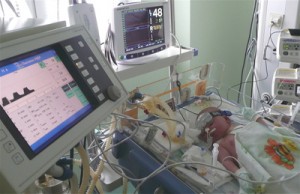Rating: 




Life’s Dominion: Argument About Abortion and Euthanasia
Today, doctors command technology that can keep people alive, sometimes for weeks, sometimes for years. People near death, people under constant sedation, either through permanent incapacity or severe pain, people for whom there is little or no chance of improvement or recovery. 
Most of us dread such a scenario, for ourselves or a loved one, life without thought or feeling, or to use the familiar analogy, a vegetable. Increasingly, people recognize the value of advance medical directives, legal documents stipulating that specified medical procedures should not be used to keep the signer alive under certain circumstances, and/or appointing someone else to make such decisions should the signer be unable.
One 1991 poll indicated 87% of those interviewed were in favour of such an arrangement in principle, but in another poll only 17% had actually signed, many because they did not know how to go about it, but most were simply squeamish about signing a document about their deaths. The reasons may be broadly similar to the relatively low uptake of national organ donor schemes.
The question ultimately explored in Ronald Dworkin’s book is ‘How do we make these decisions, as individuals and as a community, about life and death?’ (p182)
Related questions we prefer not to think about: Does a pregnant woman have the right to end the life of the foetus she is carrying? If so, up to what stage? Under what circumstances? Would anyone else have the right to make such a decision in her place, presuming she lacked the capacity to make it? If our personal view is that life is sacred, what do we mean by that? Considering the differences in legislation around the world, what role should the state play?
In 1992, the parents of a fourteen year old pregnant rape victim about to travel to London for an abortion, contacted Irish police to ask whether a chromosome test on the foetus would be helpful in finding the rapist. The police, thus put on official notice of the girl’s intention to do something they believed they could not ignore, obtained an injunction prohibiting the abortion. The furore that decision created..made the Irish Supreme Court eager to find some way to lift the injunction, which it did.
As the author reminds us, this is a moral subject of practical political importance, but of course, much more than that. Why, in a secular age, do we view life as intrinsically valuable? It is a powerful argument that discussing end of life decisions, far from trivialising life, remind us of why we value life.
“The greatest insult to the sanctity of life is indifference or laziness in the face of its complexity.” (p240)